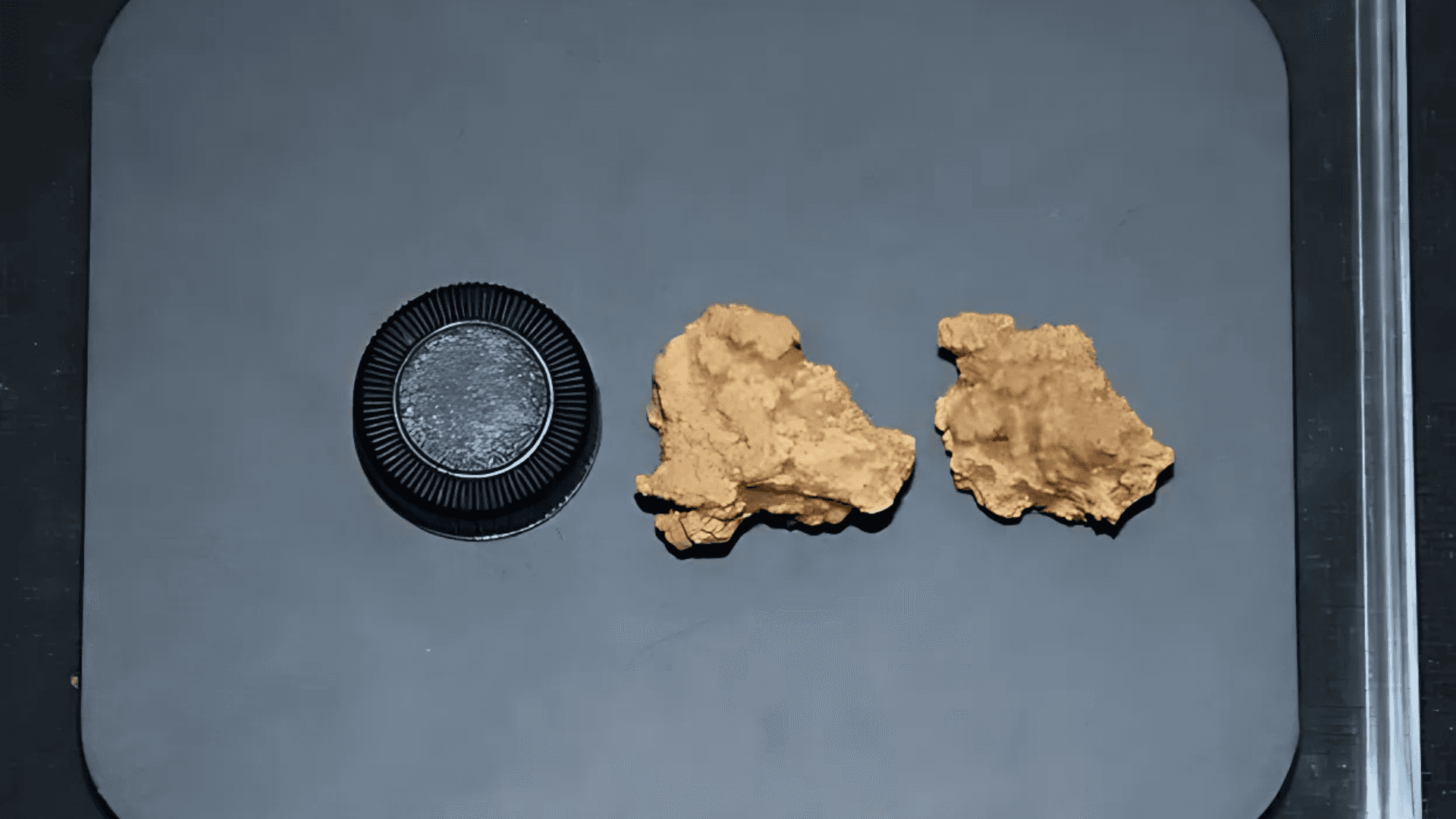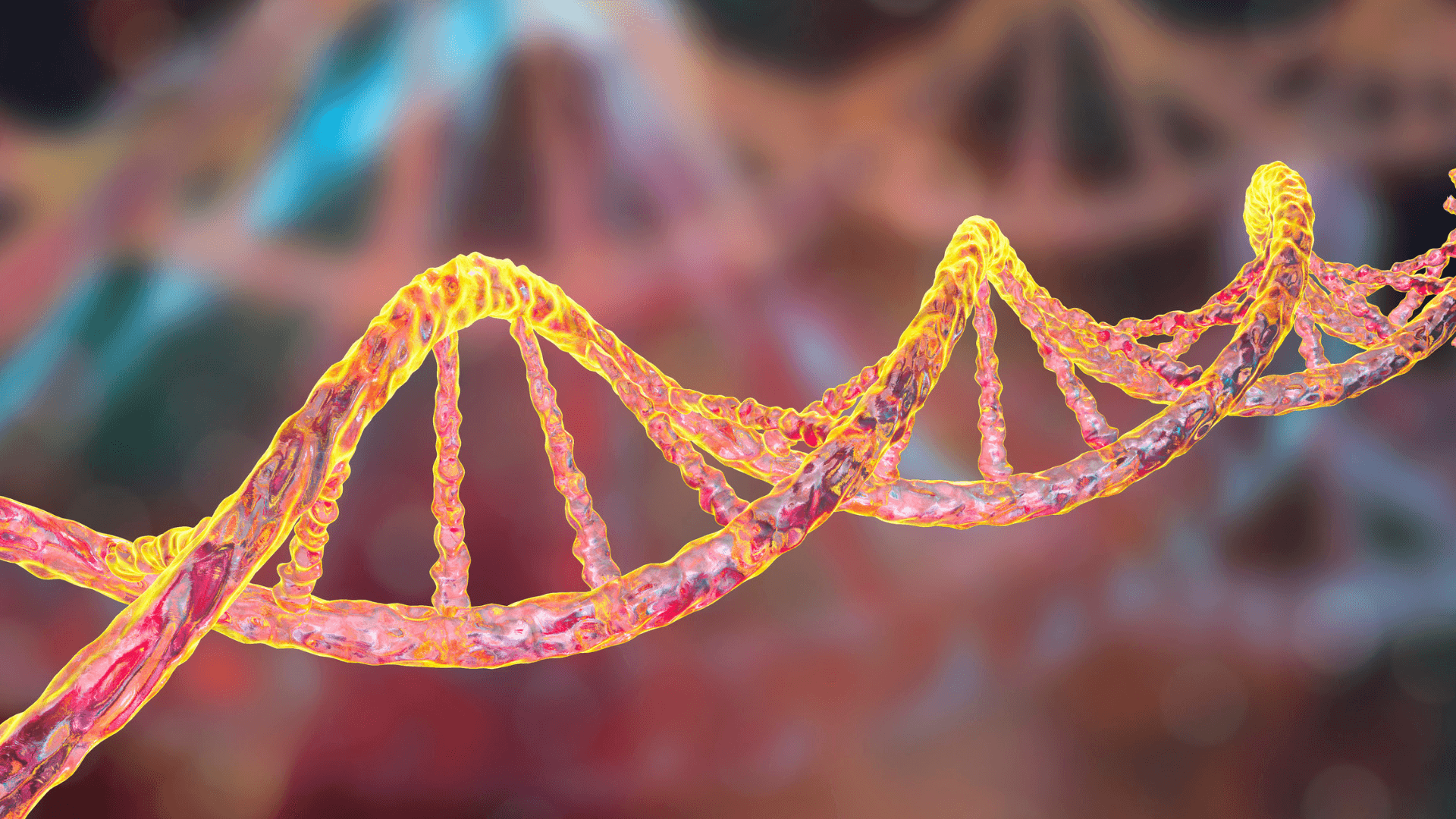Lunar New Year 2025: The Arrival of the Year of the Snake
Lunar New Year 2025: The Arrival of the Year of the Snake
Lunar New Year 2025: The Arrival of the Year of the Snake
Jan 30, 2025
Jan 30, 2025
Jan 30, 2025

Illustrative image. Credit: María Castellanos via Canva.
Illustrative image. Credit: María Castellanos via Canva.
Illustrative image. Credit: María Castellanos via Canva.
Lunar New Year 2025 began on January 29, marking the arrival of the Year of the Snake. Explore the rituals, symbolism, and traditions of this grand celebration.
Lunar New Year 2025 began on January 29, marking the arrival of the Year of the Snake. Explore the rituals, symbolism, and traditions of this grand celebration.
Lunar New Year 2025 began on January 29, marking the arrival of the Year of the Snake. Explore the rituals, symbolism, and traditions of this grand celebration.
Lunar New Year 2025 began on January 29, ushering in the Year of the Snake in the Chinese zodiac. The celebrations will last 15 days, ending with the traditional Lantern Festival on February 12. This festival is the most significant celebration in China and among many Asian communities worldwide.
The Year of the Snake and Its Influences
The Chinese zodiac operates on a 12-year cycle, with 2025 represented by the Snake, which embodies wisdom, mystery, and intuition. According to astrological traditions, fortune during this period will be determined by the Tai Sui Star Gods, prompting many people to visit temples in search of blessings and spiritual protection.
Traditions and Symbolism of the Lunar New Year
The celebration is full of meaning and legends. One of the most well-known is the legend of the Nian monster, which terrorized villages on New Year's Eve. To scare it away, people began to wear red, set off fireworks, and hang bright lanterns—traditions that persist until today. Additionally, the rituals of this season symbolize prosperity, spiritual renewal, and good luck.
Preparations for the Turn of the Year
In the days leading up to the New Year, several practices are performed to attract positive energy:
January 23 – Preparation of special cakes and puddings, representing growth and success.
January 27 – Deep cleaning of homes to ward off negative energy. In the first days of the year, sweeping or discarding trash is generally avoided, as it is believed that doing so may sweep away good luck.
On New Year's Day – It is not recommended to cut or wash the hair because the word for "hair" (发, fā) sounds like "prosperity," and washing it would symbolize the loss of wealth.
Key Events of the Celebration
Throughout the 15-day festival, various traditions mark the period:
January 28 – New Year's Eve: The family reunion dinner gathers symbolic dishes, such as fish (abundance), Chinese dumplings (wealth), and rice cakes (growth).
January 29 – First Day of the New Year: Visits to relatives and giving red envelopes (hongbao or lai see) containing money as a symbol of protection and prosperity.
January 31 – Third Day (Red Mouth Day): A day considered prone to misunderstandings, prompting many to avoid social gatherings and seek peace in temples.
February 4 – Seventh Day (People's Birthday): A celebration of the creation of humanity by the goddess Nuwa, featuring special regional dishes, such as yusheng, a delicacy typical in Malaysia and Singapore.
February 12 – Lantern Festival: The final day of festivities, marked by lantern parades and the year's first full moon, symbolizing new beginnings and family unity.
Regional Variations of the Celebrations
Lunar New Year traditions vary by region:
China: In the north, stuffed dumplings are the most common delicacy; in the south, rice-based dishes predominate.
Malaysia and Singapore: The celebration includes yusheng, a "toast to prosperity" ritual where ingredients are mixed while making wishes for good luck.
South Korea (Seollal): Besides ancestral rituals, the day features traditional games and typical dishes, such as tteokguk (rice cake soup), which symbolize a new life cycle.
—
Want to learn more about the Lunar New Year 2025? Check out CNN's special coverage.
Lunar New Year 2025 began on January 29, ushering in the Year of the Snake in the Chinese zodiac. The celebrations will last 15 days, ending with the traditional Lantern Festival on February 12. This festival is the most significant celebration in China and among many Asian communities worldwide.
The Year of the Snake and Its Influences
The Chinese zodiac operates on a 12-year cycle, with 2025 represented by the Snake, which embodies wisdom, mystery, and intuition. According to astrological traditions, fortune during this period will be determined by the Tai Sui Star Gods, prompting many people to visit temples in search of blessings and spiritual protection.
Traditions and Symbolism of the Lunar New Year
The celebration is full of meaning and legends. One of the most well-known is the legend of the Nian monster, which terrorized villages on New Year's Eve. To scare it away, people began to wear red, set off fireworks, and hang bright lanterns—traditions that persist until today. Additionally, the rituals of this season symbolize prosperity, spiritual renewal, and good luck.
Preparations for the Turn of the Year
In the days leading up to the New Year, several practices are performed to attract positive energy:
January 23 – Preparation of special cakes and puddings, representing growth and success.
January 27 – Deep cleaning of homes to ward off negative energy. In the first days of the year, sweeping or discarding trash is generally avoided, as it is believed that doing so may sweep away good luck.
On New Year's Day – It is not recommended to cut or wash the hair because the word for "hair" (发, fā) sounds like "prosperity," and washing it would symbolize the loss of wealth.
Key Events of the Celebration
Throughout the 15-day festival, various traditions mark the period:
January 28 – New Year's Eve: The family reunion dinner gathers symbolic dishes, such as fish (abundance), Chinese dumplings (wealth), and rice cakes (growth).
January 29 – First Day of the New Year: Visits to relatives and giving red envelopes (hongbao or lai see) containing money as a symbol of protection and prosperity.
January 31 – Third Day (Red Mouth Day): A day considered prone to misunderstandings, prompting many to avoid social gatherings and seek peace in temples.
February 4 – Seventh Day (People's Birthday): A celebration of the creation of humanity by the goddess Nuwa, featuring special regional dishes, such as yusheng, a delicacy typical in Malaysia and Singapore.
February 12 – Lantern Festival: The final day of festivities, marked by lantern parades and the year's first full moon, symbolizing new beginnings and family unity.
Regional Variations of the Celebrations
Lunar New Year traditions vary by region:
China: In the north, stuffed dumplings are the most common delicacy; in the south, rice-based dishes predominate.
Malaysia and Singapore: The celebration includes yusheng, a "toast to prosperity" ritual where ingredients are mixed while making wishes for good luck.
South Korea (Seollal): Besides ancestral rituals, the day features traditional games and typical dishes, such as tteokguk (rice cake soup), which symbolize a new life cycle.
—
Want to learn more about the Lunar New Year 2025? Check out CNN's special coverage.
Lunar New Year 2025 began on January 29, ushering in the Year of the Snake in the Chinese zodiac. The celebrations will last 15 days, ending with the traditional Lantern Festival on February 12. This festival is the most significant celebration in China and among many Asian communities worldwide.
The Year of the Snake and Its Influences
The Chinese zodiac operates on a 12-year cycle, with 2025 represented by the Snake, which embodies wisdom, mystery, and intuition. According to astrological traditions, fortune during this period will be determined by the Tai Sui Star Gods, prompting many people to visit temples in search of blessings and spiritual protection.
Traditions and Symbolism of the Lunar New Year
The celebration is full of meaning and legends. One of the most well-known is the legend of the Nian monster, which terrorized villages on New Year's Eve. To scare it away, people began to wear red, set off fireworks, and hang bright lanterns—traditions that persist until today. Additionally, the rituals of this season symbolize prosperity, spiritual renewal, and good luck.
Preparations for the Turn of the Year
In the days leading up to the New Year, several practices are performed to attract positive energy:
January 23 – Preparation of special cakes and puddings, representing growth and success.
January 27 – Deep cleaning of homes to ward off negative energy. In the first days of the year, sweeping or discarding trash is generally avoided, as it is believed that doing so may sweep away good luck.
On New Year's Day – It is not recommended to cut or wash the hair because the word for "hair" (发, fā) sounds like "prosperity," and washing it would symbolize the loss of wealth.
Key Events of the Celebration
Throughout the 15-day festival, various traditions mark the period:
January 28 – New Year's Eve: The family reunion dinner gathers symbolic dishes, such as fish (abundance), Chinese dumplings (wealth), and rice cakes (growth).
January 29 – First Day of the New Year: Visits to relatives and giving red envelopes (hongbao or lai see) containing money as a symbol of protection and prosperity.
January 31 – Third Day (Red Mouth Day): A day considered prone to misunderstandings, prompting many to avoid social gatherings and seek peace in temples.
February 4 – Seventh Day (People's Birthday): A celebration of the creation of humanity by the goddess Nuwa, featuring special regional dishes, such as yusheng, a delicacy typical in Malaysia and Singapore.
February 12 – Lantern Festival: The final day of festivities, marked by lantern parades and the year's first full moon, symbolizing new beginnings and family unity.
Regional Variations of the Celebrations
Lunar New Year traditions vary by region:
China: In the north, stuffed dumplings are the most common delicacy; in the south, rice-based dishes predominate.
Malaysia and Singapore: The celebration includes yusheng, a "toast to prosperity" ritual where ingredients are mixed while making wishes for good luck.
South Korea (Seollal): Besides ancestral rituals, the day features traditional games and typical dishes, such as tteokguk (rice cake soup), which symbolize a new life cycle.
—
Want to learn more about the Lunar New Year 2025? Check out CNN's special coverage.
Compartilhar em:
Compartilhar em:
Ver Também
Ver Também

DeepSeek AI: o chatbot chinês que está a sacudir o mercado global
Feb 7, 2025

Estudo revela que uma vida social ativa pode reduzir o risco de demência
Feb 4, 2025

Ano Novo Lunar 2025: a chegada do Ano da Serpente
Jan 30, 2025

Nova hipótese sobre a origem dos dinossauros desafia conceitos tradicionais
Jan 27, 2025

Colapso da plataforma de gelo Conger: alerta para a Antártica Oriental
Dec 20, 2024

Estudo relaciona poluição do ar ao risco de tromboembolismo venoso
Dec 20, 2024

As emoções e o corpo humano: conexões milenares nos textos neo-assírios
Dec 20, 2024

Ambiente potencialmente habitável em Marte é descoberto pelo Perseverance
Dec 20, 2024

Revolução XRISM: novas descobertas sobre buracos negros supermassivos
Oct 15, 2024

Estudo aponta que duplicação do gene AMY1, relacionado à digestão de amido, precede a agricultura
Oct 14, 2024

Nascimentos na UE caem para menos de 4 milhões pela primeira vez desde 1960
Oct 11, 2024

Escavação na Dinamarca revela 50 esqueletos Viking incrivelmente preservados
Oct 10, 2024

Estudo indica maior incidência de asma e rinite alérgica em pessoas nascidas no outono e inverno na Finlândia
Oct 9, 2024

Estudo demonstra semelhanças entre a puberdade de adolescentes da Idade do Gelo e jovens modernos
Oct 8, 2024

Análise de DNA em múmias chinesas de 3.600 anos revela queijo mais antigo do mundo
Oct 7, 2024

Estudo revela estabilidade genética de populações da África Austral por 10 milênios
Oct 4, 2024

Nove lugares míticos que podem ter existido, segundo descobertas arqueológicas
Oct 3, 2024

Como os direitos humanos podem salvar recifes de coral e responsabilizar governos
Oct 2, 2024

Relatório da Carbon Brief aponta que 2024 pode ser o ano mais quente da história
Sep 4, 2024

Clima determina a distribuição de mamíferos, revela estudo da Universidade Estadual da Carolina do Norte
Sep 4, 2024

DeepSeek AI: o chatbot chinês que está a sacudir o mercado global
Feb 7, 2025

Estudo revela que uma vida social ativa pode reduzir o risco de demência
Feb 4, 2025

Ano Novo Lunar 2025: a chegada do Ano da Serpente
Jan 30, 2025

Nova hipótese sobre a origem dos dinossauros desafia conceitos tradicionais
Jan 27, 2025

Colapso da plataforma de gelo Conger: alerta para a Antártica Oriental
Dec 20, 2024

Estudo relaciona poluição do ar ao risco de tromboembolismo venoso
Dec 20, 2024

As emoções e o corpo humano: conexões milenares nos textos neo-assírios
Dec 20, 2024

Ambiente potencialmente habitável em Marte é descoberto pelo Perseverance
Dec 20, 2024

Revolução XRISM: novas descobertas sobre buracos negros supermassivos
Oct 15, 2024

Estudo aponta que duplicação do gene AMY1, relacionado à digestão de amido, precede a agricultura
Oct 14, 2024

Nascimentos na UE caem para menos de 4 milhões pela primeira vez desde 1960
Oct 11, 2024

Escavação na Dinamarca revela 50 esqueletos Viking incrivelmente preservados
Oct 10, 2024

Estudo indica maior incidência de asma e rinite alérgica em pessoas nascidas no outono e inverno na Finlândia
Oct 9, 2024

Estudo demonstra semelhanças entre a puberdade de adolescentes da Idade do Gelo e jovens modernos
Oct 8, 2024

Análise de DNA em múmias chinesas de 3.600 anos revela queijo mais antigo do mundo
Oct 7, 2024

Estudo revela estabilidade genética de populações da África Austral por 10 milênios
Oct 4, 2024

Nove lugares míticos que podem ter existido, segundo descobertas arqueológicas
Oct 3, 2024

Como os direitos humanos podem salvar recifes de coral e responsabilizar governos
Oct 2, 2024

Relatório da Carbon Brief aponta que 2024 pode ser o ano mais quente da história
Sep 4, 2024

Clima determina a distribuição de mamíferos, revela estudo da Universidade Estadual da Carolina do Norte
Sep 4, 2024